THE HISTORY OF ST. MARY’S ACADEMY OF STA. ANA
From a Kingdom to a District
During the 11th century, several miles up the Pasig River lay the oldest and of the largest kingdom surpassing the vastness of Tondo and Manila. This was the Kingdom of Namayan. Based on the Franciscan chronicler, Fray Felix de la Huerta, the kingdom is ruled by Lakantagkan and his wife Buan. The kingdom of Lakantagkan was quite immense, and included what we now know as Mandaluyong, Makati, Paco, Pandacan, Malate, San Juan del Monte, Quiapo, Sampaloc, San Miguel and even as far inland as Taytay.
Namayan was a confederation of independent kingdom-barangays. Maysapa or Sapa is a village which was Namayan’s capital. Its name was derived from its proximity to the Pasig River and from the nearby creeks. According to a legend, when the first Catholic missionaries asked the natives the name of the area, they pointed to the banks of the Pasig River. Consequently, the locals thinking that the foreigners were referring to the terrain responded with “sapa” or the Tagalog word for marshes.
When Namayan fell into the hand of the Spaniards along with Manila in 1571. They made haste of building a settlement there. The Franciscan missionaries were the second wave of missionaries coming from Spain, after the Augustinian friars. They first settled in Intramuros when they arrived in 1578. They were placed in a new church which was placed under the protection of Our Lady of the Angels. The Spanish colonizers awarded them the areas of Santa Ana de Sapa, Paco, Pandacan, Sampaloc and San Francisco del Monte for evangelization. The Franciscans were the first to establish a mission beyond the walls of Intramuros (referred to as Manila) in 1578. Henceforth, they dedicated the district to Saint Anne, the mother of the Blessed Virgin Mary, and called it, Santa Ana de Sapa, or “Saint Anne of the Marshes”.
The first church dedicated to St. Anne, the Blessed Virgin’s mother, was built from bamboos and nipa. The church as it stands today was first built in 1720, in a new settlement, under the direction of Fr. Vicente Ingles, OFM, who also brought the image of our Lady of the Abandoned to the Philippines to be enshrined in the Church of Sta. Ana. In the palace dedicated to St. Ann and where the image of the Blessed Virgin Mary was enshrined would be the place where the seeds of education would be planted by the daughters of Venerable Ignacia del Espiritu Santo and would bloom and spring forth bountiful fruits from generation to generation.
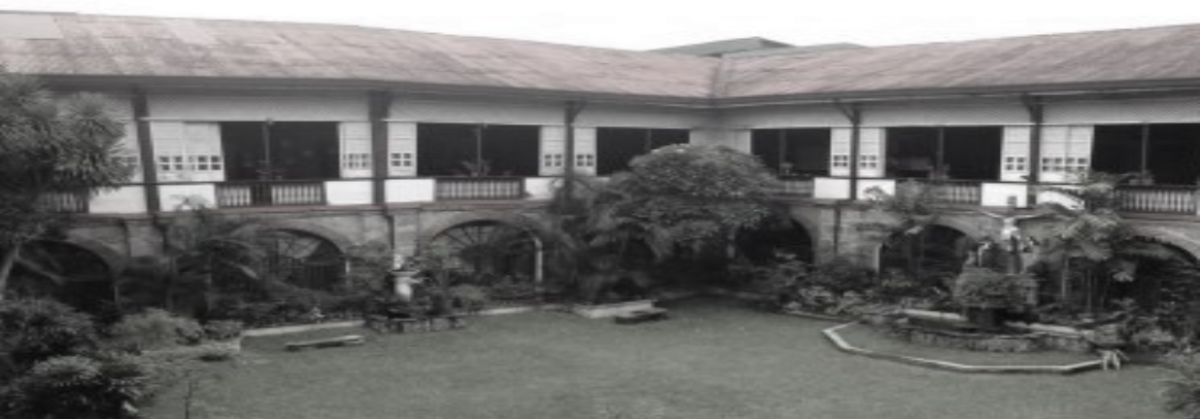
Pioneering Catholic Education in the District of Sta. Ana
"Mother Ignacia del Espiritu Santo’s lamp continues to shine as her daughters courageously strive to respond with zeal to the call of mission in different contexts." – excerpt from Venerable Ignacia del Espiritu Santo and her Legacy
To answer to the need for religious instruction for the young minds of Sta. Ana de Sapa, in October 1911, Sr. Ma. Salome Castro, RVM and Sr. Zosima Zapanta, RVM were assigned to work in the district to assist the Franciscans Fathers in their missionary work. Two lady parishioners, Aurora Diaz de Rivera and Patrocinio Casal, aided them for four years in their catechetical apostolate. The two sisters returned to the Beaterio in the afternoon.
Classes from grades one to four were finally organized by 1915. During this time the school was fondly referred as the Escuela Parroquial de Sta. Ana, Manila. Pupils were housed at the convent of the church.
The primary grades had received government recognition in July 1920. The primary school was named “Escuela Catolica de Sta. Ana” or referred to as the Sta. Ana Catholic School.
The primary students were taught to reading, writing and numeracy. They were also trained for doing work or chores. Aside from the catechism lessons, Spanish was also taught.
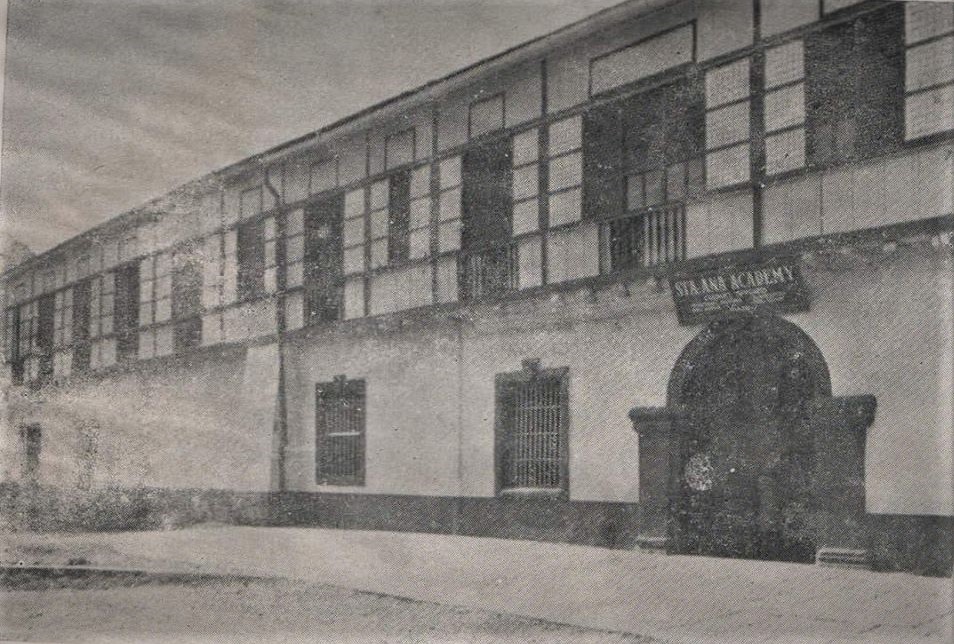
A Nation Under Siege through Faith We Overcome
As the consequence of the Second World War the Japanese Imperial Forces invaded the Philippines. To ensure the safety of the pupils and personnel the school was forced to close down. Concern for the continuous education of the learners, the sisters sought approval from the Japanese invaders to allow the school to reopen the school in July 1942. During this difficult time, the school was able to add Grade five class in 1943, and the Grade Six class was added in 1944.
In February 1945, as the combined United States and Philippine forces liberated Manila from the Japanese Sta. Ana was the only district that did not suffer the wrath of war. The school reopened after it was deemed safe to return to classes. In April of the same year marked the first graduation exercises of the six graders.
The school opened Secondary Course in 1945-1946. The number of students increased each year so the sisters thought of ways and means to accommodate them. By SY 1947 – 1948, the congregation brought a lot at Herran Street (now Pedro Gil Street) which was intended for constructing a building that will house the school population. In 1949, government recognition was granted to the High School which coincides with the first high school commencement exercises. The school has complete elementary and secondary levels and had been renamed, “Sta. Ana Academy”.
The construction of the new school building started in SY 1949 – 1950 and was completed in 1951. Upon the completion of the new building, all classes from the old convent transferred to the new building. In SY 1959 – 1960, the male students were placed at St. Francis School under the direction of the Franciscan fathers of the parish. The girls remained at the Sta. Ana Academy under the RVM sisters. Sta. Ana Academy evolved into St. Ann Academy, an exclusive school for girls.
With the increasing population another building was constructed in 1967, it was the St. Ann Building.
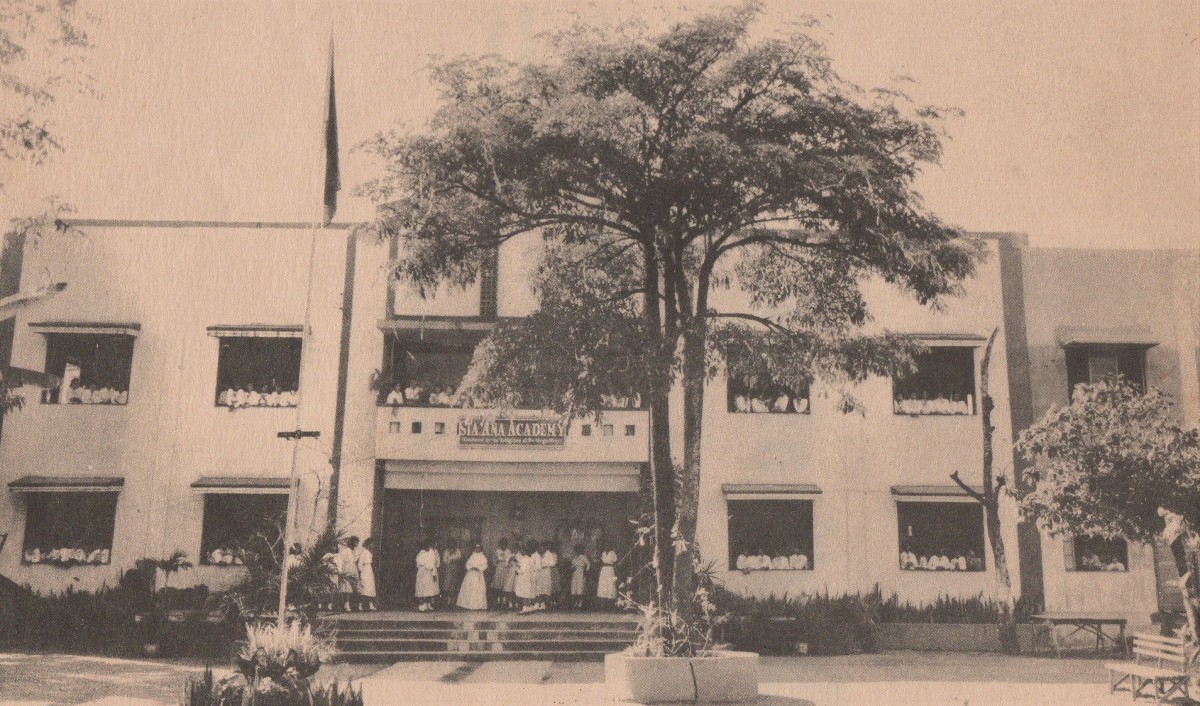
The School at the Crossroad and the Flowering of New Hope
The seventies was considered as a tumultuous part of the nation’s history. Conflict and violence between the government against the people’s movement produced fear, chaos and uncertainties in the nation’s citizens and was a contributory factor in the consistent decrease of the student population. As a consequence of the latter, the congregation had to choose between retaining the apostolate of education or to shift to social action. Parents and students alike clamor for the continuance of the school and have sought the intervention of the late Jaime Cardinal Sin, the newly-appointed Archbishop of Manila. As a result, the education apostolate was retained.
Though the perseverance and diligence of the school administration, the school population increased in the coming years that the congregation worked for the construction of the Mother Foundress Building (Mother Ignacia Building) which was completed in 1983 to allow more students to partake in the offering of the institution.
Because of the passage of time, the wooden structures had to be replaced by two three storey buildings: The Assumption Building which housed the administrative offices and the learning centers and the Immaculate Conception Building which provided additional rooms for the intermediate pupils who had whole-day session instead of the previous double sessions/shifts. The latter also had open auditorium which became the venue of school programs and commencement exercises.
Envisioning an accredited school as a proof of its excellent instruction and services. The administration, faculty, personnel and the school community constantly improve the school’s instructional program and services by providing a guiding force and inspiration in the further development of the institution through the formulation of its own vision-mission derived from the congregation’s vision mission. The improved delivery of instruction, and collaboration with other RVM schools in peer-observations made a mark in the school’s status of excellence.
Succeeding administrators initiated the Alumni Homecoming, the organization of the family council and the organization of the different clubs and organizations for the students. The Office of the Campus Ministry and the Office of the Student Activity were also created. Faculty scholars were enrolled in the Summer Institute for Graduate Studies at the De La Salle University, Manila for their professional development.
The pursuit of excellence continued through the self-survey meetings for PAASCU accreditation in September 1995. As the dream was slowly becoming a reality, continuous improvement of the school’s learning centers: Instructional Media Center-Library, Science Laboratory, THE Laboratory, GS and HS Computer Laboratories continued coupled with enhanced focus on the curriculum and instruction.
To be the best in the district was the direction that the institution pushed though. Though the link with the parish and with the community to improve the image of St. Mary’s Academy as the best Catholic school in the district. Great improvements in the facilities were made through the renovations of the learning centers to make them more appealing to the students.
In 1998, the Madonna Building was completed and SY 1999 – 2000, two adjoining houses and lots were bought by the congregation intended for further expansion of the school. The two houses were named Our Lady of Refuge and Our Lady of Abandoned served as dormitories the Technology and Home Economics Room while the plans for the construction of a new building were being laid out. That same year, the school bought new sets of computers for the two computer laboratories. Offices were linked through a local area network (LAN). Flowing with the advancement in technology, the school connected to the Internet.
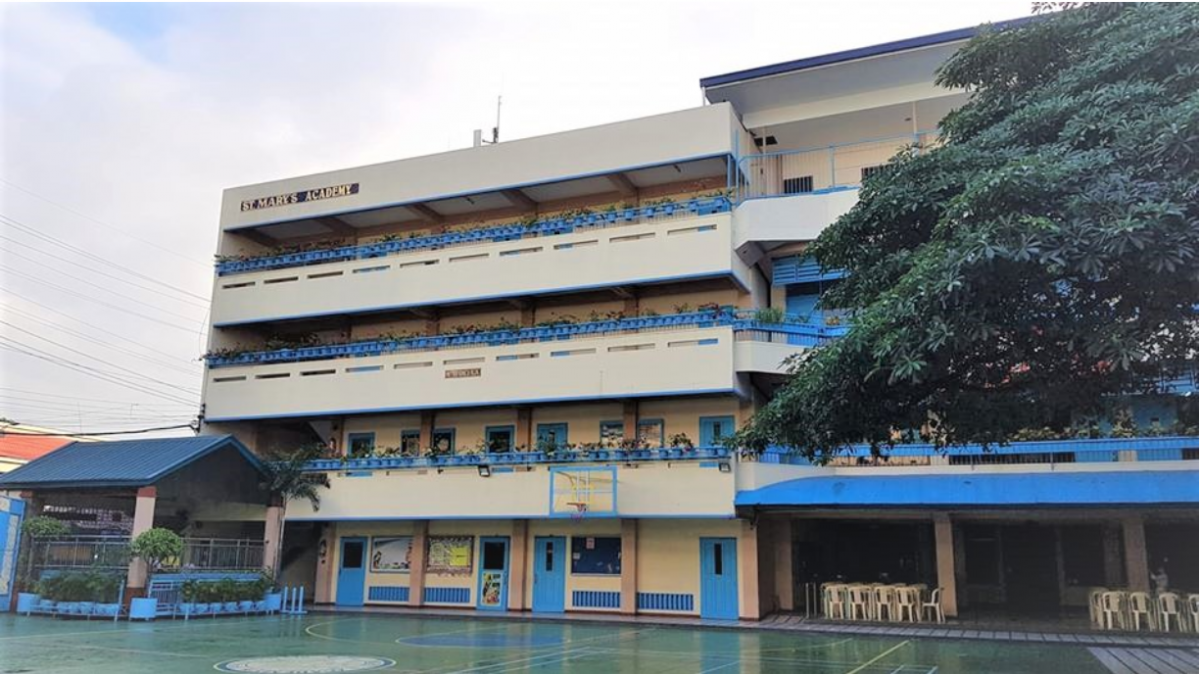
New Millennium – New Beginning - ST. MARY’S ACADEMY
On March 27, 1999 the school was renamed “St. Mary’s Academy.” This was in line with the congregation’s vision of renaming RVM-owned and administered schools to strengthen the bond among them.
At the onset of the new millennium, the GS Department passed the PAASCU Preliminary/Self Survey in January while the Kindergarten Program was granted government recognition on April 2000. A year after the GS Department was finally granted formal accreditation. Moreover, the GS department was granted reaccreditation while the HS Department passed the PAASCU Formal Survey on May 2005.
Facilities improvement and reverting the physical appearance of the school to the grandeur of Old District of Sta. Ana happened during SY 2007 – 2008, the school’s façade and gate were restructured and the Venerable Ignacia’s Garden installed. A provision for a state-of-the-art and spacious Speech Laboratory providing a better venue for speech development and oral competence was put in place.
The students walked into fully air-conditioned rooms and learning centers in SY 2008-2009. Improvements were also observed in the classrooms through renovations and repairs of its different structures.
The construction of the Sacred Heart Building was realized last SY 2009 – 2010 giving the institution its auditorium-gymnasium, the Audio – Visual Room, the school canteen and more functional Home Economics Room. The chapel was also improved and expanded to accommodate more during spiritual activities.
During the SY 2010-2011, the PAASCU grants the institution another five years of reaccreditation as Integrated Basic Education. During the succeeding years, classrooms were fitted with LCD TV/monitor for lesson presentations. To control flooding the school ground was elevated to control flooding inside the campus. Additional classrooms were constructed at the fourth floor of St. Ann Building to accommodate more students. The computer laboratories were transferred with new sets of units were acquired and the rewiring of networks to increase the speed of connection and sets of computer units were also set up in conjunction with the upgrading of the technological facilities of the institution. New sets of computer units were also acquired for both departments.
As the school nears its centennial foundation anniversary in 2020, the institution launched its five-year preparation starting SY 2014 -2015. It had remained committed to become the beacon of excellence in the district by focusing on the effective implementation of its program through the continuous improvement of its services to the stakeholders. With these guiding principles, the school administration had made great leaps in the school’s further improvement.
The school’s communication with parents and other stakeholders was improved through the provision of guidelines and policies which were implemented and enforced for the entire school year that would facilitate the different operations of the school. Increased participation of the school to competitions, conferences and training developed the learners’ various skills, thus exposures to off-campus activities in different fields were one of the school priorities. Furthermore, the school constantly provided venues where performance in the field of art was tapped among the learners and personnel which did not only benefitted the school’s scholarship funds but also the children of the Partner Community.
By adopting the Quality Road map, the school slowly attained an established system in all key processes in the operation of the institution.
In the succeeding school years, continuous improvement of the institutions facilities was realized through the completion of the renovated Audio-Visual Room, improved staircases and heritage room along with the comfort rooms and lavatories.
In SY 2015-2016, to serve the transportation service of the institution, it acquired a 56-seater bus to be used by the in their educational field trips and other outbound activities.
In terms of curriculum improvement, the full implementation of the RVM pedagogy pushed the innovation in the curriculum. Faith integration was carried out from classroom instruction the different co-curricular activities in the school. The first Faculty and Personnel Variety Show premiered to the delight of the spectators which encapsulated Ignacian Core and Related Values espoused by the school as its theme.
And as its initial step on journey towards its centennial celebration by 2020 it adopted the theme: SMASA … the home of quality Catholic education from generation to generation.
The school hosted the venue for seminars and meeting intended for private schools organized by the Division Office o Department of Education in Manila. It also hosted a Disaster Management Summit attended by private and public school representatives, barangay officials and community leaders from the fifth and sixth districts of the city of Manila.
As the school culminated the school year, another five-year reaccreditation status was granted by the Philippine Accrediting Association for Schools, Colleges and Universities supporting the school’s quest for excellence in academics and services.
In SY 2016 – 2017, the initial roll out of the Senior High School offering two academic tracks: STEM and ABM. For closer coordination, the office of the Campus Ministry, Community Involvement Program and Christian Living Area were integrated into the Christian Formation Center to attend to concern in the spiritual growth and formation of the heart for the poor of all personnel and learners. The institution participated in different spiritual activities spearheaded by the Archdiocese of Manila including the activities related to the apostolic visit of Pope Francis to the Philippines by taking part in the Youth Encounter with his holiness at the University of Sto. Tomas grounds.
To continuously instills environmental awareness and consciousness among the community, the use of polystyrene food containers was not allowed inside the campus. Waste management and 5S system were implemented. The school also adopted a no-junk food policy to develop healthy lifestyle among its learners and personnel. Learners are also discouraged to bring junk foods to school particularly for their snacks during recess. Water potability and safety were ensured by regular microbiological analysis. Additional CCTV cameras are installed at designated areas around the campus for safety and security of the SMASA community.
In SY 2017 – 2018, the vision and mission statements of the school was re-aligned with the revised vision mission of the RVM EMC. The school was clustered with St. Mary’s Academy Pasay and St. Mary’s Academy of Manila.
In accordance to the RVM Road Map realization, the first internal audit was conducted last January 2018 to provide opportunities for the improvement of the school management system as reflected on the audit findings. The first internal audit and instruction audit was conducted on January 2018 to find out the best or outstanding features of the areas audited and provided opportunities to improve the school management system based on the reported audit findings.
To fully implement the requirements of the Data Privacy Act otherwise known as RA10173, a data protection officer was appointed to communicate and supervise the protection of data in the school setting. As an initial step, the offices and units wrote their Data Privacy Risk Management Plan.
In coordination with St. Mary’s Academy – Pasay, the offering of the Arts Buffet where the imagination and creativity of the learners were honed through varied activities.
The first commencement exercises for the senior high school was held.
In SY 2018-2019, as implementation of the RVM Road Map, the first curriculum audit was conducted in SY 2018-2019. To empower its employee in the service of the students and pupils, key people were assigned as Grade Level Coordinators to better monitor the behavior and needs of the learners. The Academic, Arts and Entrepreneurship Day was conducted to engage the interest of the students to the different subjects and tasks that would make them more competent and productive.
The countdown for the Centennial Celebration of the institution commenced on February 20, 2019.
By SY 2019-2020, three audits were done during the school year, internal audit, instruction audit and curriculum audit as part of the Quality Road. The school launched its Learning Management System through GENYO powered by Diwa Learning Systems, Inc., thus allowing offline and online digital learning.
Last February 2020, the school observed a week-long celebration of its centennial celebration through sports and athletic activities, field demonstration, Student’s Night, Recitals and Talent Presentations. The celebration was highlighted with the PARANGAL 2020: the SMASA Centennial Night where the school paid tribute to the men, women, religious, associations and organizations that had contributed to the growth and development of the institution for the past 100 years looking forward to its continuous progress in the years to come in realization of its vision and mission and continue its legacy: St. Mary’s Academy of Sta. Ana: the home of Quality Catholic Education from generation to generation.
MOTHER IGNACIA DEL ESPIRITU SANTO (1663-1748) AND HER LEGACY
 Mother Ignacia del Espiritu Santo lived during the Spanish colonial era in the Philippines. The precise date of her birth is not known but the record shows the date of her baptism on March 4, 1663. This confirms the statement of Pedro Murillo Velarde, biographer of Mother Ignacia, that she was 21 years old in 1684. Ignacia was the eldest and the sole surviving child of Maria Jeronima, an yndia, and Jusepe Iuco, a pure Chinese immigrant from Amoy, China. Her father was converted to Catholicism in 1652 and resided in Binondo, Manila.
Mother Ignacia del Espiritu Santo lived during the Spanish colonial era in the Philippines. The precise date of her birth is not known but the record shows the date of her baptism on March 4, 1663. This confirms the statement of Pedro Murillo Velarde, biographer of Mother Ignacia, that she was 21 years old in 1684. Ignacia was the eldest and the sole surviving child of Maria Jeronima, an yndia, and Jusepe Iuco, a pure Chinese immigrant from Amoy, China. Her father was converted to Catholicism in 1652 and resided in Binondo, Manila.
When Ignacia was 21 years old, her parents wanted her to marry. Heeding a call deep within but not wanting to disappoint her parents, Ignacia sought counsel from Fr. Paul Klein, a Jesuit priest from Bohemia who arrived in Manila in 1682. The priest gave her the Spiritual exercises of St. Ignatius. after this period of solitude and prayer, Ignacia decided to “remain in the service of the Divine Majesty” and to “live by the sweat of her brow.” She left home and brought with her only a needle and a pair of scissors. She started to live alone in the house located at the back of the Jesuit college of Manila. Her life of prayer and labor attracted yndias who were also called to religious life but could not be admitted to existing beaterios at that time. Mother Ignacia accepted these women into her company and the first community was born. They became known as the Beatas de la compañia de Jesus because they frequently received the sacraments at the church of St. Ignatius, performed many acts of devotion there and went to the Jesuit Fathers for spiritual direction and confession.
Mother Ignacia centered her life on the suffering Christ and tried to imitate Him through a life of service and humility. She prayed earnestly to God and performed penances to move God to have mercy on them. Her spirituality of humble service was expressed in her capacity to forgive, to bear wrongs patiently and to correct with gentleness and meekness. This spirituality was manifested in peace and harmony in the community, mutual love and union of wills, witnessing to the love of Jesus Christ and the maternal care of Mary our Blessed Mother.
This spirituality sustained the beatas in their moments of difficulties especially during times of extreme poverty, when they even had to beg for rice and salt and scour the streets for firewood. The beatas continued to support themselves by the labor of their hands and sometimes received some financial help from pious people. In all these, they did not cease to thank God and to trust in His divine providence.
The growing number of beatas called for a more stable lifestyle and a set of rules. a daily schedule was drawn up and community practices were defined. Following the spirit of St. Ignatius, Mother Ignacia exhorted her beatas to live always in the presence of God and to develop great purity of heart. She also emphasized charity in the community which was dedicated to the Blessed Mother. The spirit of Mary runs through the rules that were written for the guidance of the beatas. In defining her style of leadership, Mother Ignacia drew inspiration from the Blessed Virgin Mary. She strove to be the living image of Mary to her companions and exhorted them to take Mary as their model in following Jesus.
Mother Ignacia gradually realized that the Beaterio was called by God not only to a life of prayer and penance but also to apostolic service. The Beaterio admitted young girls and boarders who were taught christian doctrine as well as works proper to them. Mother Ignacia did not make any distinction of color or race but accepted yndias, mestizas and Spaniards as recogidas. The beatas were also involved in retreat work and helped the Jesuit Fathers by preparing the retreatants to be disposed to the Spiritual exercises.
Mother Ignacia submitted the 1726 constitutions of the Beaterio to the archdiocesan officer for approval. after the approval was given in 1732 by the Fiscal Provisor of Manila, Mother Ignacia decided to give up her responsibility as Superior of the house. She lived as an ordinary member until her death on September 10, 1748. Pedro Murillo Velarde saw this as a great sign of humility. She had not desired to command and control. In his estimation, Mother Ignacia was a “true valiant woman who overcame the great difficulties which she met in the foundation from the beginning to the end.” She was “mortified, patient, devout, spiritual, zealous for the good of souls.”
A few months before her death, the archbishop initiated a process of securing royal protection for the Beaterio. Mother Ignacia died without knowing the response of the Spanish king but her long life in the Beaterio must have taught her to trust in the providence of God. little did she expect that the Beaterio would become a congregation and continue to exist until today, more than 300 years after her death. The congregation, now known as the religious of the Virgin Mary, is a living testimony to her life as God’s handmaid who opened the door of religious life to native women in the Philippines. She proved that God is the God of all peoples, of whatever color or race.
The royal protection granted in 1755 guaranteed the safety of the beatas but it did not recognize the beaterio as a community of religious women. It was ordained to remain as a pious association. The beatas, faithful to the spirit of the foundress, M. Ignacia, lived the vows of poverty, chastity and obedience as religious women even without being recognized as such. The expulsion of the Jesuits in 1768 was another blow to the beatas. They lost their spiritual guides but they continued to enjoy the solicitude of the archbishop of Manila and other church men. In the spirit of M. Ignacia, the beatas lived by the sweat of their brow and persevered in the service of God through education and retreat work. Despite attempts by the Governor-General to change the nature of the beaterio, the beatas remained faithful to the vision and charism of M. Ignacia and survived the dark years.
The growth of the beaterio into a Congregation and its response to the apostolic challenges of the times show the vitality of the spirit of M. Ignacia. Indeed, her lamp continues to shine as her daughters courageously strive to respond with zeal to the call of mission in different contexts. The story of the congregation that has grown from the small Beaterio of Mother Ignacia continues to unfold. It bears witness to the enduring vitality and strength of the foundation, the spirituality of Mother Ignacia. The lamp she lit to guide the path of the native women aspiring to the religious life and the maturity of faith still shines. It remains undimmed. The life of this lowly yndia and the fruits of her spirituality proclaim the immense goodness and unbounded mercy of God.
An article of the weekly paper, La Illustracion Filipina, September 7, 1803 issue, described Mother Ignacia as “the genuine product of the highest order of the nation and a fitting model of womanhood…She was foundress of a religious institution that still lives its pristine spirit vigorously two centuries after its foundation.” The Philippine National Historical association gave recognition to Mother Ignacia del espiritu Santo as the first Filipina to start the first Filipino congregation for women in the Philippines, the female organizer of retreat movements for women throughout the world and one of the pioneers of Christian education of youth in the Philippines.
Today, Mother Ignacia lives in the Spirit and heart of the Religious of The Virgin Mary (RVM), a religious congregation of women which started from her humble foundation. The sisters are actively participating in God’s mission of proclaiming the Good News through various apostolates: education, retreat movements, seminary, dormitory, and social ministries in the Philippines and overseas. Cardinal Pironio, on December 8, 1983 wrote the Superior General… “The present flourishing state of the congregation of the religious of the Virgin Mary not only testifies to God’s blessings on your Institute, but also a proof that the foundations were solidly laid, that the members of the Institute are giving witness of a truly religious life, as well as fulfilling the service to the church intended by Ignacia.”
Pope Benedict XVI, during a private audience on July 6, 2007 with cardinal Jose Saraiva Martins, CMF, Prefect of the congregation for the causes of Saints, authorized the promulgation of decrees concerning 16 holy men and women who will be elevated to the altar. one of them was Mother Ignacia del Espiritu Santo.
The promulgation of the Decretum Super Virtutibus (Decree on Virtues) which His Holiness Pope Benedict XVI accepted, ratified, and ordered to be published in the acts of the congregation for the causes of Saints last July 6, 2007, states that the Servant of God “is found to possess to a heroic degree the theological virtues of Faith, Hope and charity toward God and neighbor, as well as, the cardinal virtues of Prudence, Justice, Temperance and Fortitude.”
On February 1, 2008, Manila archbishop Gaudencio Cardinal Rosales presided over the promulgation which officially accorded to Mother Ignacia the title “Venerable” at the Minor Basilica of San Lorenzo Ruiz in Binondo, Manila.
SCHOOL SEAL
“AM” stands for “Ave Maria” in praise of our Blessed Mother Mary, the Patroness of the RVM Congregation. The stars which surrounded the monogram (AM) represent the God-given prerogative of Mary, Mother of God and Mother of the church. The rays signify the light and wisdom from God through Jesus Christ, the Light of the World. The Sampaguita beneath the book symbolizes the purity of the heart of Mary and Mother Ignacia and the Filipino origin of the school. At the center of the seal is an open book which bears the Latin inscription “Initium sapientiae timor Domini.” This means “the fear of the Lord is the beginning of wisdom”. It expresses filial fear, a disposition of profound reverence, awe and love for God, the source of all wisdom, grace and life.
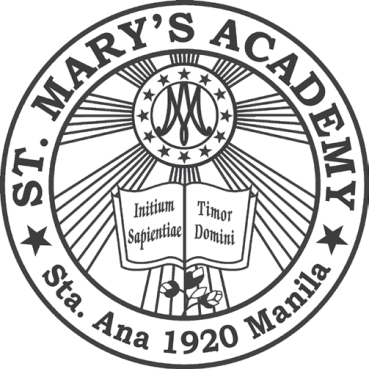
RVM SCHOOL GREETING
Praised be Jesus and Mary! Now and forever!




